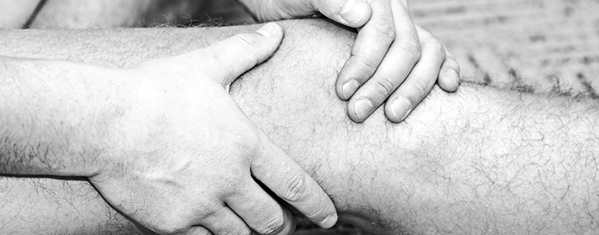

Sports Injury
Sports Injury
By elevating the injured part it helps to reduce the bleeding into the area. The early and correct management of a sporting injury is of great importance to the long term outcome of the healing process. For example, a chartered physiotherapist is in an excellent position to prevent the onset of chronic swelling which can have a major effect on the later stages of treatment, leading to a poor rehabilitation outcome and increase the probability for a recurrence of the injury.The scope of a sports injury could potentially cover many areas of damage, from broken bones and the damage of major blood vessels to a ligament sprain or bruising. In any case the early and effective management is crucial.
What Is A Soft Tissue Injury?
Physiotherapy can be of benefit in the early stage of a soft tissue injury. That is damage to muscle, ligament, tendon, joint capsule and/or cartilage. Soft tissue injuries can be categorised according to their degrees of severity.
First degree (mild): a mild stretch to the ligament or capsular structures, or a direct blow to the muscle. Minimal swelling or bruising is noted but mild pain is felt at end of the range of movement or on stretch or contraction of the muscle. There is no joint instability or loss of function and minimal muscle spasm.
Second degree (moderate): a moderate stretch to the ligament or capsular structures, or over-stretch or direct blow to the muscle, resulting in the tearing of some muscle fibres. Moderate swelling and bruising is noted. Pain is felt on any movement which limits the muscles ability to contract. There is joint instability, moderate muscle spasm and some loss of function.
Third degree (severe): a severe over-stretch of the ligament, or excessive stretch or direct blow to the muscle, resulting in the complete tear of the injured structure. There is significant swelling and bruising along with severe pain at rest and a severe functional impairment.
What Happens When The Body Sustains An Injury?
Immediately after an injury the body starts an organised and consistent process in an attempt to heal the damaged structures. There are 3 stages to the healing process.
1. Inflammation
2. Proliferation
3. Remodelling
The inflammatory phase may last anything up to 6 days. Signs of inflammation are heat, redness, pain and swelling.
What Are The Aims Of Early Management Of Inflammation?
To reduce:
- Pain
- Tissue temperature.
- Swelling
- Further damage
How Should You Manage Acute Inflammation?
Current evidence suggests that in the first 72 hours after sustaining a soft tissue injury the most effective method of management is to follow the PRICE regimen.
Protection: Immediately after the injury, protect the injured area from further stress which may disrupt the healing process and delay healing. Protection may be in the form of bandaging, splinting, slings, crutches and/or bed-rest.
Rest: This avoids placing undue stress directly onto the injured area. So for example in the case of an ankle sprain, the person need not take total rest, but limit the amount of time spent standing or walking. Or in more severe cases of ankle sprain may be provided with crutches to take some or all of their weight. Thus allowing rest to the injured area.
Ice: The use of ice directly onto the injured area dramatically reduces the temperature in the tissue and therefore reduces the onset of swelling. It can also reduce pain by numbing the nerve endings in the area. Ice should be applied as follow: crushed and wrapped in a damp towel or if in a plastic bag or gel pack this should still be wrapped in a damp towel. This is to prevent an "ice burn". It is recommended that the ice should be left in place for 30 minutes. The ice should cover the entire area of injury.
Compression: Helps to control swelling in the area of injury. It can also help prevent the formation of scar tissue. Compression should always be applied from the lower to the upper area of an injury e.g. for an ankle injury bandage from the foot to above the ankle. Where possible the compression should be 6 inches below and above the injury. It should be applied as soon as possible and be in place for 72 hours when not lying down. The area should be checked intermittently for signs that the compression is too tight, that is decreased temperature and dusky colouration.
Elevation: Of the injured part helps to reduce bleeding into the area. It also increases the drainage of waste products of inflammation, so helping to reduce swelling. The injured area should be elevated above the level of the heart wherever possible during the first 72 hours post injury. It also should b supported by pillows or slings.
Sports injuries can have a huge impact on an individual at both personal and team levels.
At Synergy Healthcare Clinic, we can take the pain out of the worry of your injury.
We can treat you from day one if necessary, through to full rehabilitation. Our vast and varied experience in this field can give you the confidence that we will endeavour to work collaboratively with you for the ultimate goal of returning you to your chosen sport.
Since commencing treatment with yourselves and being treated with your new Shockwave machine, my lower back and chronic achilles problems has dramatically improved I have now returned to running again. It has truly changed my life!
Mr Hall














